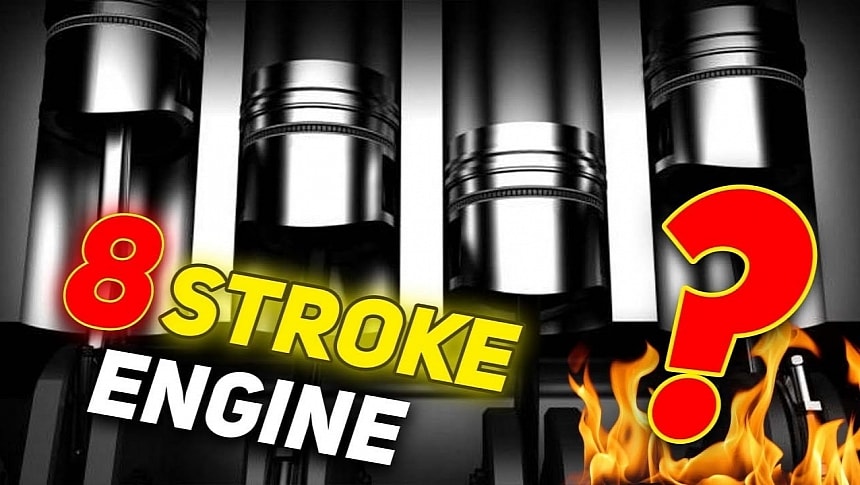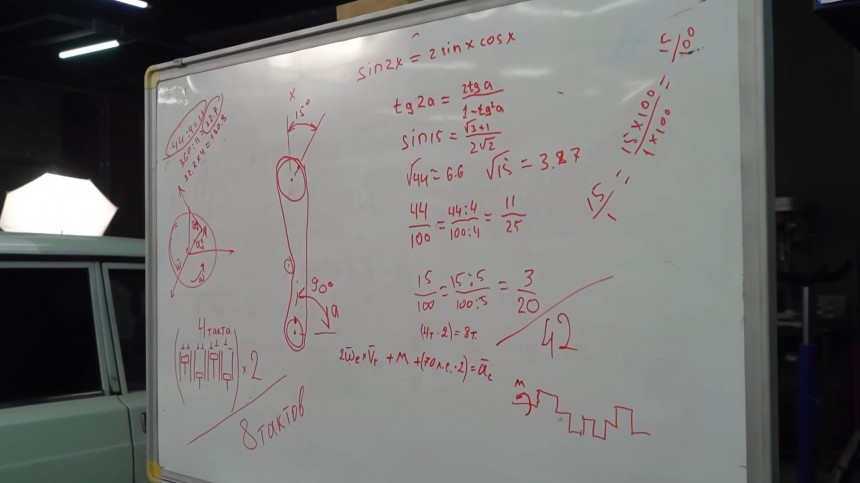The realm of pistons and internal combustion has been on an evolutionary arms race since the very first power stroke of the Big Bang that started the reciprocating piston revolution. Stronger, faster, better, cheaper, smoother, higher, quicker – the narrative of progress is in no short supply of laudable opinions. For some strange reason, the world settled on the four-stroke concept as the main means of pushing forward. But what lies beyond that magical boundary of Suck-Squeeze-Bang-Blow?
Nearly 100 years ago, Cadillac gifted a sixteen-cylinder motor to the world, the famous V16 powerplant that took the world by storm. Unfortunately, it was a shooting star, and the piston architecture was not successfully repeated after that. Bugatti is now making waves with a century-old concept, but that’s nothing more than putting lipstick on a supermodel. At the end of the day, it’s still a regular, everyday, normal four-stroke internal combustion engine, albeit from the top tier of performance.
A real break-away from this madding mantra of the magical design of hydrocarbon-burning powerplants is to fiddle not with the number of cylinders (from the absolute required minimum of one up to whatever) but how those pistons produce motion. In short, they are altering the four-stroke motoring fabric two-fold. Hello, Garage 54 mechanics!
The Siberians are still snowed in – apparently, the capitalist concept of Global Warming hasn’t penetrated the thick skull of Russia's very wintery spring, and the thaw hasn’t yet worked its wonders in Novosibirsk. Plenty of time, therefore, to cook up new crazy ideas of how to crank it up to eight. Piston strokes, that is, a 100% increment over the traditional approach laid down some 140 years ago.
How on Earth can one add more strokes to one four-cylinder engine? By playing around with timing, that is the Russian answer to this question that has bothered literally no one since the beginning of the horseless age. If the valves open and close slower than usual, fuel gets into the combustion chambers less frequently, meaning the pistons travel up and down more between two sparks.
To do this, the math has to be spot on: the timing gear on the camshaft must decrease the rotational speed of the lobe-bearing rod exactly by half, meaning it has to be four times as big as the original. Since the camshaft turns at half the speed of the crankshaft, adding one extra stroke to each existing one needs a 1:4 reduction in the gearing ratio of the two parts.
Fabricating a sprocket wheel with the required number of teeth is easy, but calculating the exact number of sprockets is challenging. Since both timing gears have been substituted with bespoke parts, the calculations start from scratch, eventually leading to an 11/42 ratio between the cranks and the cam’s toothed wheels.
Which immediately sets off another issue – the starter motor. With the lowered values in the equation, the crankshaft doesn’t spin the camshaft fast enough to get the engine to run on its own. The only solution is to up the starter’s game, but how?
One approach is to add voltage to its electric rotor so it will go faster (but that will fry up everything else – a 12V system isn’t very fond of getting a sudden 24V power surge). Alternatively, use old-fashioned mechanical physics: tow the car to the required speed.
That is exactly what the Garage 54 team is going for. After a few misfires and stalls, the engine runs – dubiously linear and frustratingly sounding, but it does the job. Since the experiment is conducted around the shop in the snowy alleys of one of Novosibirsk’s suburbs, rigorous testing doesn’t determine its scientific value. However, at first glance, it would appear that the eight-stroke engine is a success.
A real break-away from this madding mantra of the magical design of hydrocarbon-burning powerplants is to fiddle not with the number of cylinders (from the absolute required minimum of one up to whatever) but how those pistons produce motion. In short, they are altering the four-stroke motoring fabric two-fold. Hello, Garage 54 mechanics!
The Siberians are still snowed in – apparently, the capitalist concept of Global Warming hasn’t penetrated the thick skull of Russia's very wintery spring, and the thaw hasn’t yet worked its wonders in Novosibirsk. Plenty of time, therefore, to cook up new crazy ideas of how to crank it up to eight. Piston strokes, that is, a 100% increment over the traditional approach laid down some 140 years ago.
To do this, the math has to be spot on: the timing gear on the camshaft must decrease the rotational speed of the lobe-bearing rod exactly by half, meaning it has to be four times as big as the original. Since the camshaft turns at half the speed of the crankshaft, adding one extra stroke to each existing one needs a 1:4 reduction in the gearing ratio of the two parts.
Fabricating a sprocket wheel with the required number of teeth is easy, but calculating the exact number of sprockets is challenging. Since both timing gears have been substituted with bespoke parts, the calculations start from scratch, eventually leading to an 11/42 ratio between the cranks and the cam’s toothed wheels.
One approach is to add voltage to its electric rotor so it will go faster (but that will fry up everything else – a 12V system isn’t very fond of getting a sudden 24V power surge). Alternatively, use old-fashioned mechanical physics: tow the car to the required speed.
That is exactly what the Garage 54 team is going for. After a few misfires and stalls, the engine runs – dubiously linear and frustratingly sounding, but it does the job. Since the experiment is conducted around the shop in the snowy alleys of one of Novosibirsk’s suburbs, rigorous testing doesn’t determine its scientific value. However, at first glance, it would appear that the eight-stroke engine is a success.









































